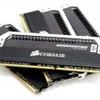Performance Gaming
Far Cry 2
Throw your memory back to the year 2004 and the release of the innovative Far Cry on PC. Developer Crytek managed to fashion one of the most convincing and striking locales in all of gaming, and satisfied gamers with the freedom to pass through the landscape and tackle enemies in almost any way they saw fit. You surely remember Jack Carver and that things were about to get seriously messed up for you? Well, tough luck. You are no longer at that deserted tropical island but hop into a jeep and arrive at the sandy savannah surroundings of Africa. And that's a change... as much as you'll no longer run into any mutants, aliens, or any superpowers or psychic powers. Also - you are no longer Jack Carver, you assume the role of one of nine different mercenaries who are embedded in the midst of a brutal civil war which rages in an imaginary African nation.
Everything that goes down is involved in a dirty little bush war in central Africa and you'll have to use a rusty AK-47 and whatever bits of scavenged land mine you can duct-tape together. Two factions struggle for supremacy: the United Front for Liberation and Labour and the Alliance for Popular Resistance, and both are known for blood and control.

Far Cry 2 I like very much. Not so much for the gameplay anymore, yet the rendered environment and how the game can react to it. We are in high-quality DX10 mode with 0x AA (anti-aliasing) and 16x AF (anisotropic filtering) at 1280x1024.
The difference in-between 1333 MHz to 2133 MHz remains relative, as at high resolution your GPU would flatten the differences alright due to GPU limitation and other bottlenecks. So we used 12x10 to be able to show you the measurable difference. Would we flick on AA and game in a higher resolution, then the difference would be near NIL.
DX10: 3DMark Vantage
3DMark Vantage focuses on the two areas most critical to gaming performance: the CPU and the GPU. With the emergence of multi-package and multi-core configurations on both the CPU and GPU side, the performance scale of these areas has widened, and the visual and game-play effects made possible by these configurations are accordingly wide-ranging. This makes covering the entire spectrum of 3D gaming a difficult task. 3DMark Vantage solves this problem in three ways:
1. Isolate GPU and CPU performance benchmarking into separate tests,
2. Cover several visual and game-play effects and techniques in four different tests, and
3. Introduce visual quality presets to scale the graphics test load up through the highest-end hardware.
To this end, 3DMark Vantage has two GPU tests, each with a different emphasis on various visual techniques, and two CPU tests, which cover the two most common CPU-side tasks: Physics Simulation and AI. It also has four visual quality presets (Entry, Performance, High, and Extreme) available in the Advanced and Professional versions, which increase the graphics load successively for even more visual quality. Each preset will produce a separate, official 3DMark score, tagged with the preset in question.

Above, you can see 3DMark Vantage, this time the overall P score. This is a GeForce GTX 680 (MSI Lightning) BTW (PhysX disabled).
And comparing 2133 MHz 32GB to 1333 MHz 32GB shows a minimal differential. That's a direct result of only the memory frequency. Interesting enough Dual-Channel performed the fastest here.

